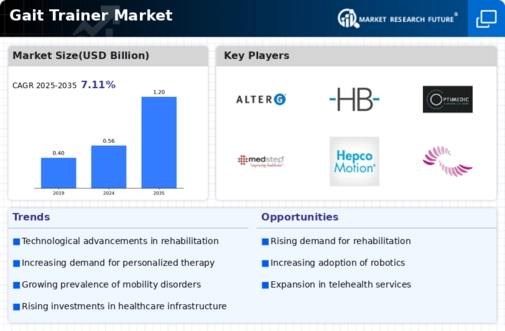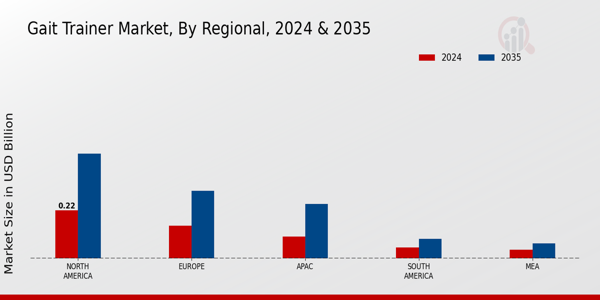-
'TABLE
-
OF CONTENTS
-
EXECUTIVE SUMMARY
-
Market Overview
-
Key Findings
-
Market Segmentation
-
Competitive Landscape
-
Challenges and Opportunities
-
Future Outlook
-
MARKET INTRODUCTION
-
Definition
-
Scope of the study
- Research
-
Objective
-
Assumption
- Limitations
-
RESEARCH METHODOLOGY
-
Overview
-
Data Mining
-
Secondary Research
-
Primary Research
-
Primary Interviews and Information Gathering Process
-
Breakdown of Primary Respondents
-
Forecasting Model
-
Market Size Estimation
- Bottom-Up Approach
-
Top-Down Approach
-
Data Triangulation
-
Validation
-
MARKET DYNAMICS
-
Overview
-
Drivers
-
Restraints
-
Opportunities
-
MARKET FACTOR ANALYSIS
-
Value chain Analysis
-
Porter''s Five Forces Analysis
-
Bargaining Power of Suppliers
-
Bargaining Power of Buyers
-
Threat of New Entrants
- Threat
-
of Substitutes
-
Intensity of Rivalry
-
COVID-19 Impact Analysis
- Market Impact Analysis
- Regional Impact
- Opportunity
-
and Threat Analysis
-
GAIT TRAINER MARKET, BY TYPE (USD
-
BILLION)
-
Active Gait Trainers
-
Passive Gait Trainers
-
Hybrid Gait Trainers
-
GAIT TRAINER MARKET, BY APPLICATION (USD BILLION)
-
Rehabilitation Centers
-
Home Care
-
Research Institutions
-
Sports Training
-
GAIT TRAINER MARKET, BY END USE (USD BILLION)
-
Hospitals
-
Physiotherapy Clinics
-
Fitness Centers
-
GAIT TRAINER
-
MARKET, BY DISTRIBUTION CHANNEL (USD BILLION)
-
Direct Sales
-
Online
-
Sales
-
Third-Party Distributors
-
GAIT TRAINER MARKET, BY REGIONAL
-
(USD BILLION)
-
North America
- US
- Canada
-
Europe
- Germany
- UK
- France
- Russia
- Italy
- Spain
- Rest of Europe
-
APAC
-
China
- India
- Japan
- South
-
Korea
-
Malaysia
- Thailand
- Indonesia
- Rest
-
of APAC
-
South America
- Brazil
- Mexico
- Argentina
- Rest of South America
-
MEA
- GCC Countries
-
South Africa
-
Rest of MEA
-
COMPETITIVE LANDSCAPE
-
Overview
-
Competitive Analysis
-
Market share Analysis
-
Major Growth Strategy in the Gait Trainer Market
-
Competitive Benchmarking
-
Leading Players in Terms of Number of Developments in the Gait Trainer
-
Market
-
Key developments and growth strategies
- New Product Launch/Service
-
Deployment
-
Merger & Acquisitions
- Joint Ventures
-
Major Players Financial Matrix
-
Sales and Operating Income
- Major
-
Players R&D Expenditure. 2023
-
COMPANY PROFILES
-
AlterG
- Financial Overview
- Products Offered
- Key
-
Developments
-
SWOT Analysis
- Key Strategies
-
Curexo Technology Corporation
-
Financial Overview
- Products Offered
-
Key Developments
-
SWOT Analysis
- Key Strategies
-
Hochiki Corporation
-
Financial Overview
- Products Offered
-
Key Developments
-
SWOT Analysis
- Key Strategies
-
Harmonic Bionics
-
Financial Overview
- Products Offered
-
Key Developments
-
SWOT Analysis
- Key Strategies
-
Bionix Medical Technologies
-
Financial Overview
- Products Offered
-
Key Developments
-
SWOT Analysis
- Key Strategies
-
OptiMed
-
Financial Overview
- Products Offered
- Key
-
Developments
-
SWOT Analysis
- Key Strategies
-
Technohere
-
Financial Overview
- Products Offered
-
Key Developments
-
SWOT Analysis
- Key Strategies
-
Medstep
-
Financial Overview
- Products Offered
- Key
-
Developments
-
SWOT Analysis
- Key Strategies
-
HepcoMotion
-
Financial Overview
- Products Offered
-
Key Developments
-
SWOT Analysis
- Key Strategies
-
ReoGo
-
Financial Overview
- Products Offered
-
Key Developments
-
SWOT Analysis
- Key Strategies
-
Motek Medical
-
Financial Overview
- Products Offered
-
Key Developments
-
SWOT Analysis
- Key Strategies
-
Physiotherapy Associates
-
Financial Overview
- Products Offered
-
Key Developments
-
SWOT Analysis
- Key Strategies
-
Kinesthetics
-
Financial Overview
- Products Offered
-
Key Developments
-
SWOT Analysis
- Key Strategies
-
Karma Healthcare
-
Financial Overview
- Products Offered
-
Key Developments
-
SWOT Analysis
- Key Strategies
-
Biodex Medical Systems
-
Financial Overview
- Products Offered
-
Key Developments
-
SWOT Analysis
- Key Strategies
-
References
-
Related Reports
-
LIST OF ASSUMPTIONS
-
ESTIMATES & FORECAST, BY TYPE, 2019-2035 (USD BILLIONS)
-
MARKET SIZE ESTIMATES & FORECAST, BY APPLICATION, 2019-2035 (USD BILLIONS)
-
NORTH AMERICA GAIT TRAINER MARKET SIZE ESTIMATES & FORECAST, BY END USE,
-
2035 (USD BILLIONS)
-
ESTIMATES & FORECAST, BY DISTRIBUTION CHANNEL, 2019-2035 (USD BILLIONS)
-
NORTH AMERICA GAIT TRAINER MARKET SIZE ESTIMATES & FORECAST, BY REGIONAL,
-
2035 (USD BILLIONS)
-
FORECAST, BY TYPE, 2019-2035 (USD BILLIONS)
-
SIZE ESTIMATES & FORECAST, BY APPLICATION, 2019-2035 (USD BILLIONS)
-
US GAIT TRAINER MARKET SIZE ESTIMATES & FORECAST, BY END USE, 2019-2035 (USD
-
BILLIONS)
-
CHANNEL, 2019-2035 (USD BILLIONS)
-
ESTIMATES & FORECAST, BY REGIONAL, 2019-2035 (USD BILLIONS)
-
CANADA GAIT TRAINER MARKET SIZE ESTIMATES & FORECAST, BY TYPE, 2019-2035 (USD
-
BILLIONS)
-
APPLICATION, 2019-2035 (USD BILLIONS)
-
SIZE ESTIMATES & FORECAST, BY END USE, 2019-2035 (USD BILLIONS)
-
CANADA GAIT TRAINER MARKET SIZE ESTIMATES & FORECAST, BY DISTRIBUTION CHANNEL,
-
2035 (USD BILLIONS)
-
& FORECAST, BY REGIONAL, 2019-2035 (USD BILLIONS)
-
MARKET SIZE ESTIMATES & FORECAST, BY TYPE, 2019-2035 (USD BILLIONS)
-
EUROPE GAIT TRAINER MARKET SIZE ESTIMATES & FORECAST, BY APPLICATION, 2019-2035
-
(USD BILLIONS)
-
BY END USE, 2019-2035 (USD BILLIONS)
-
SIZE ESTIMATES & FORECAST, BY DISTRIBUTION CHANNEL, 2019-2035 (USD BILLIONS)
-
REGIONAL, 2019-2035 (USD BILLIONS)
-
SIZE ESTIMATES & FORECAST, BY TYPE, 2019-2035 (USD BILLIONS)
-
GERMANY GAIT TRAINER MARKET SIZE ESTIMATES & FORECAST, BY APPLICATION, 2019-2035
-
(USD BILLIONS)
-
BY END USE, 2019-2035 (USD BILLIONS)
-
SIZE ESTIMATES & FORECAST, BY DISTRIBUTION CHANNEL, 2019-2035 (USD BILLIONS)
-
REGIONAL, 2019-2035 (USD BILLIONS)
-
ESTIMATES & FORECAST, BY TYPE, 2019-2035 (USD BILLIONS)
-
SIZE ESTIMATES & FORECAST, BY APPLICATION, 2019-2035 (USD BILLIONS)
-
UK GAIT TRAINER MARKET SIZE ESTIMATES & FORECAST, BY END USE, 2019-2035
-
(USD BILLIONS)
-
BY DISTRIBUTION CHANNEL, 2019-2035 (USD BILLIONS)
-
SIZE ESTIMATES & FORECAST, BY REGIONAL, 2019-2035 (USD BILLIONS)
-
FRANCE GAIT TRAINER MARKET SIZE ESTIMATES & FORECAST, BY TYPE, 2019-2035
-
(USD BILLIONS)
-
BY APPLICATION, 2019-2035 (USD BILLIONS)
-
MARKET SIZE ESTIMATES & FORECAST, BY END USE, 2019-2035 (USD BILLIONS)
-
FRANCE GAIT TRAINER MARKET SIZE ESTIMATES & FORECAST, BY DISTRIBUTION CHANNEL,
-
2035 (USD BILLIONS)
-
& FORECAST, BY REGIONAL, 2019-2035 (USD BILLIONS)
-
MARKET SIZE ESTIMATES & FORECAST, BY TYPE, 2019-2035 (USD BILLIONS)
-
RUSSIA GAIT TRAINER MARKET SIZE ESTIMATES & FORECAST, BY APPLICATION, 2019-2035
-
(USD BILLIONS)
-
BY END USE, 2019-2035 (USD BILLIONS)
-
SIZE ESTIMATES & FORECAST, BY DISTRIBUTION CHANNEL, 2019-2035 (USD BILLIONS)
-
REGIONAL, 2019-2035 (USD BILLIONS)
-
ESTIMATES & FORECAST, BY TYPE, 2019-2035 (USD BILLIONS)
-
SIZE ESTIMATES & FORECAST, BY APPLICATION, 2019-2035 (USD BILLIONS)
-
ITALY GAIT TRAINER MARKET SIZE ESTIMATES & FORECAST, BY END USE, 2019-2035
-
(USD BILLIONS)
-
BY DISTRIBUTION CHANNEL, 2019-2035 (USD BILLIONS)
-
SIZE ESTIMATES & FORECAST, BY REGIONAL, 2019-2035 (USD BILLIONS)
-
SPAIN GAIT TRAINER MARKET SIZE ESTIMATES & FORECAST, BY TYPE, 2019-2035
-
(USD BILLIONS)
-
BY APPLICATION, 2019-2035 (USD BILLIONS)
-
SIZE ESTIMATES & FORECAST, BY END USE, 2019-2035 (USD BILLIONS)
-
SPAIN GAIT TRAINER MARKET SIZE ESTIMATES & FORECAST, BY DISTRIBUTION CHANNEL,
-
2035 (USD BILLIONS)
-
& FORECAST, BY REGIONAL, 2019-2035 (USD BILLIONS)
-
TRAINER MARKET SIZE ESTIMATES & FORECAST, BY TYPE, 2019-2035 (USD BILLIONS)
-
BY APPLICATION, 2019-2035 (USD BILLIONS)
-
TRAINER MARKET SIZE ESTIMATES & FORECAST, BY END USE, 2019-2035 (USD BILLIONS)
-
BY DISTRIBUTION CHANNEL, 2019-2035 (USD BILLIONS)
-
TRAINER MARKET SIZE ESTIMATES & FORECAST, BY REGIONAL, 2019-2035 (USD BILLIONS)
-
2035 (USD BILLIONS)
-
& FORECAST, BY APPLICATION, 2019-2035 (USD BILLIONS)
-
SIZE ESTIMATES & FORECAST, BY END USE, 2019-2035 (USD BILLIONS)
-
APAC GAIT TRAINER MARKET SIZE ESTIMATES & FORECAST, BY DISTRIBUTION CHANNEL,
-
2035 (USD BILLIONS)
-
& FORECAST, BY REGIONAL, 2019-2035 (USD BILLIONS)
-
SIZE ESTIMATES & FORECAST, BY TYPE, 2019-2035 (USD BILLIONS)
-
CHINA GAIT TRAINER MARKET SIZE ESTIMATES & FORECAST, BY APPLICATION, 2019-2035
-
(USD BILLIONS)
-
BY END USE, 2019-2035 (USD BILLIONS)
-
ESTIMATES & FORECAST, BY DISTRIBUTION CHANNEL, 2019-2035 (USD BILLIONS)
-
CHINA GAIT TRAINER MARKET SIZE ESTIMATES & FORECAST, BY REGIONAL, 2019-2035
-
(USD BILLIONS)
-
BY TYPE, 2019-2035 (USD BILLIONS)
-
ESTIMATES & FORECAST, BY APPLICATION, 2019-2035 (USD BILLIONS)
-
INDIA GAIT TRAINER MARKET SIZE ESTIMATES & FORECAST, BY END USE, 2019-2035 (USD
-
BILLIONS)
-
CHANNEL, 2019-2035 (USD BILLIONS)
-
ESTIMATES & FORECAST, BY REGIONAL, 2019-2035 (USD BILLIONS)
-
JAPAN GAIT TRAINER MARKET SIZE ESTIMATES & FORECAST, BY TYPE, 2019-2035 (USD
-
BILLIONS)
-
2035 (USD BILLIONS)
-
& FORECAST, BY END USE, 2019-2035 (USD BILLIONS)
-
SIZE ESTIMATES & FORECAST, BY DISTRIBUTION CHANNEL, 2019-2035 (USD BILLIONS)
-
2035 (USD BILLIONS)
-
& FORECAST, BY TYPE, 2019-2035 (USD BILLIONS)
-
MARKET SIZE ESTIMATES & FORECAST, BY APPLICATION, 2019-2035 (USD BILLIONS)
-
SOUTH KOREA GAIT TRAINER MARKET SIZE ESTIMATES & FORECAST, BY END USE, 2019-2035
-
(USD BILLIONS)
-
FORECAST, BY DISTRIBUTION CHANNEL, 2019-2035 (USD BILLIONS)
-
MARKET SIZE ESTIMATES & FORECAST, BY REGIONAL, 2019-2035 (USD BILLIONS)
-
MALAYSIA GAIT TRAINER MARKET SIZE ESTIMATES & FORECAST, BY TYPE, 2019-2035
-
(USD BILLIONS)
-
FORECAST, BY APPLICATION, 2019-2035 (USD BILLIONS)
-
MARKET SIZE ESTIMATES & FORECAST, BY END USE, 2019-2035 (USD BILLIONS)
-
MALAYSIA GAIT TRAINER MARKET SIZE ESTIMATES & FORECAST, BY DISTRIBUTION
-
CHANNEL, 2019-2035 (USD BILLIONS)
-
SIZE ESTIMATES & FORECAST, BY REGIONAL, 2019-2035 (USD BILLIONS)
-
THAILAND GAIT TRAINER MARKET SIZE ESTIMATES & FORECAST, BY TYPE, 2019-2035
-
(USD BILLIONS)
-
FORECAST, BY APPLICATION, 2019-2035 (USD BILLIONS)
-
MARKET SIZE ESTIMATES & FORECAST, BY END USE, 2019-2035 (USD BILLIONS)
-
THAILAND GAIT TRAINER MARKET SIZE ESTIMATES & FORECAST, BY DISTRIBUTION
-
CHANNEL, 2019-2035 (USD BILLIONS)
-
SIZE ESTIMATES & FORECAST, BY REGIONAL, 2019-2035 (USD BILLIONS)
-
INDONESIA GAIT TRAINER MARKET SIZE ESTIMATES & FORECAST, BY TYPE, 2019-2035
-
(USD BILLIONS)
-
FORECAST, BY APPLICATION, 2019-2035 (USD BILLIONS)
-
MARKET SIZE ESTIMATES & FORECAST, BY END USE, 2019-2035 (USD BILLIONS)
-
INDONESIA GAIT TRAINER MARKET SIZE ESTIMATES & FORECAST, BY DISTRIBUTION
-
CHANNEL, 2019-2035 (USD BILLIONS)
-
SIZE ESTIMATES & FORECAST, BY REGIONAL, 2019-2035 (USD BILLIONS)
-
REST OF APAC GAIT TRAINER MARKET SIZE ESTIMATES & FORECAST, BY TYPE, 2019-2035
-
(USD BILLIONS)
-
FORECAST, BY APPLICATION, 2019-2035 (USD BILLIONS)
-
MARKET SIZE ESTIMATES & FORECAST, BY END USE, 2019-2035 (USD BILLIONS)
-
REST OF APAC GAIT TRAINER MARKET SIZE ESTIMATES & FORECAST, BY DISTRIBUTION
-
CHANNEL, 2019-2035 (USD BILLIONS)
-
MARKET SIZE ESTIMATES & FORECAST, BY REGIONAL, 2019-2035 (USD BILLIONS)
-
SOUTH AMERICA GAIT TRAINER MARKET SIZE ESTIMATES & FORECAST, BY TYPE, 2019-2035
-
(USD BILLIONS)
-
& FORECAST, BY APPLICATION, 2019-2035 (USD BILLIONS)
-
TRAINER MARKET SIZE ESTIMATES & FORECAST, BY END USE, 2019-2035 (USD BILLIONS)
-
BY DISTRIBUTION CHANNEL, 2019-2035 (USD BILLIONS)
-
TRAINER MARKET SIZE ESTIMATES & FORECAST, BY REGIONAL, 2019-2035 (USD BILLIONS)
-
TYPE, 2019-2035 (USD BILLIONS)
-
& FORECAST, BY APPLICATION, 2019-2035 (USD BILLIONS)
-
MARKET SIZE ESTIMATES & FORECAST, BY END USE, 2019-2035 (USD BILLIONS)
-
BRAZIL GAIT TRAINER MARKET SIZE ESTIMATES & FORECAST, BY DISTRIBUTION CHANNEL,
-
2035 (USD BILLIONS)
-
& FORECAST, BY REGIONAL, 2019-2035 (USD BILLIONS)
-
MARKET SIZE ESTIMATES & FORECAST, BY TYPE, 2019-2035 (USD BILLIONS)
-
MEXICO GAIT TRAINER MARKET SIZE ESTIMATES & FORECAST, BY APPLICATION, 2019-2035
-
(USD BILLIONS)
-
BY END USE, 2019-2035 (USD BILLIONS)
-
SIZE ESTIMATES & FORECAST, BY DISTRIBUTION CHANNEL, 2019-2035 (USD BILLIONS)
-
REGIONAL, 2019-2035 (USD BILLIONS)
-
SIZE ESTIMATES & FORECAST, BY TYPE, 2019-2035 (USD BILLIONS)
-
ARGENTINA GAIT TRAINER MARKET SIZE ESTIMATES & FORECAST, BY APPLICATION, 2019-2035
-
(USD BILLIONS)
-
FORECAST, BY END USE, 2019-2035 (USD BILLIONS)
-
MARKET SIZE ESTIMATES & FORECAST, BY DISTRIBUTION CHANNEL, 2019-2035 (USD BILLIONS)
-
BY REGIONAL, 2019-2035 (USD BILLIONS)
-
TRAINER MARKET SIZE ESTIMATES & FORECAST, BY TYPE, 2019-2035 (USD BILLIONS)
-
FORECAST, BY APPLICATION, 2019-2035 (USD BILLIONS)
-
GAIT TRAINER MARKET SIZE ESTIMATES & FORECAST, BY END USE, 2019-2035 (USD BILLIONS)
-
FORECAST, BY DISTRIBUTION CHANNEL, 2019-2035 (USD BILLIONS)
-
GAIT TRAINER MARKET SIZE ESTIMATES & FORECAST, BY REGIONAL, 2019-2035 (USD BILLIONS)
-
2035 (USD BILLIONS)
-
& FORECAST, BY APPLICATION, 2019-2035 (USD BILLIONS)
-
SIZE ESTIMATES & FORECAST, BY END USE, 2019-2035 (USD BILLIONS)
-
MEA GAIT TRAINER MARKET SIZE ESTIMATES & FORECAST, BY DISTRIBUTION CHANNEL,
-
2035 (USD BILLIONS)
-
& FORECAST, BY REGIONAL, 2019-2035 (USD BILLIONS)
-
TRAINER MARKET SIZE ESTIMATES & FORECAST, BY TYPE, 2019-2035 (USD BILLIONS)
-
BY APPLICATION, 2019-2035 (USD BILLIONS)
-
TRAINER MARKET SIZE ESTIMATES & FORECAST, BY END USE, 2019-2035 (USD BILLIONS)
-
BY DISTRIBUTION CHANNEL, 2019-2035 (USD BILLIONS)
-
TRAINER MARKET SIZE ESTIMATES & FORECAST, BY REGIONAL, 2019-2035 (USD BILLIONS)
-
BY TYPE, 2019-2035 (USD BILLIONS)
-
MARKET SIZE ESTIMATES & FORECAST, BY APPLICATION, 2019-2035 (USD BILLIONS)
-
SOUTH AFRICA GAIT TRAINER MARKET SIZE ESTIMATES & FORECAST, BY END USE,
-
2035 (USD BILLIONS)
-
ESTIMATES & FORECAST, BY DISTRIBUTION CHANNEL, 2019-2035 (USD BILLIONS)
-
SOUTH AFRICA GAIT TRAINER MARKET SIZE ESTIMATES & FORECAST, BY REGIONAL,
-
2035 (USD BILLIONS)
-
ESTIMATES & FORECAST, BY TYPE, 2019-2035 (USD BILLIONS)
-
MARKET SIZE ESTIMATES & FORECAST, BY APPLICATION, 2019-2035 (USD BILLIONS)
-
REST OF MEA GAIT TRAINER MARKET SIZE ESTIMATES & FORECAST, BY END USE,
-
2035 (USD BILLIONS)
-
ESTIMATES & FORECAST, BY DISTRIBUTION CHANNEL, 2019-2035 (USD BILLIONS)
-
REST OF MEA GAIT TRAINER MARKET SIZE ESTIMATES & FORECAST, BY REGIONAL,
-
2035 (USD BILLIONS)
-
MARKET SYNOPSIS
-
US GAIT TRAINER MARKET ANALYSIS BY TYPE
-
ANALYSIS BY APPLICATION
-
USE
-
US GAIT TRAINER MARKET ANALYSIS BY REGIONAL
-
MARKET ANALYSIS BY TYPE
-
APPLICATION
-
CANADA GAIT TRAINER MARKET ANALYSIS BY DISTRIBUTION CHANNEL
-
CANADA GAIT TRAINER MARKET ANALYSIS BY REGIONAL
-
MARKET ANALYSIS
-
GERMANY GAIT TRAINER MARKET ANALYSIS BY APPLICATION
-
MARKET ANALYSIS BY END USE
-
BY DISTRIBUTION CHANNEL
-
BY REGIONAL
-
UK GAIT TRAINER MARKET ANALYSIS BY APPLICATION
-
ANALYSIS BY END USE
-
FRANCE GAIT TRAINER MARKET ANALYSIS BY TYPE
-
MARKET ANALYSIS BY APPLICATION
-
END USE
-
RUSSIA GAIT TRAINER MARKET ANALYSIS BY TYPE
-
MARKET ANALYSIS BY APPLICATION
-
END USE
-
ITALY GAIT TRAINER MARKET ANALYSIS BY TYPE
-
MARKET ANALYSIS BY APPLICATION
-
END USE
-
ITALY GAIT TRAINER MARKET ANALYSIS BY REGIONAL
-
MARKET ANALYSIS BY TYPE
-
APPLICATION
-
SPAIN GAIT TRAINER MARKET ANALYSIS BY DISTRIBUTION CHANNEL
-
SPAIN GAIT TRAINER MARKET ANALYSIS BY REGIONAL
-
TRAINER MARKET ANALYSIS BY TYPE
-
BY APPLICATION
-
USE
-
CHANNEL
-
APAC GAIT TRAINER MARKET ANALYSIS
-
ANALYSIS BY TYPE
-
CHINA GAIT TRAINER MARKET ANALYSIS BY DISTRIBUTION CHANNEL
-
MARKET ANALYSIS BY REGIONAL
-
TYPE
-
INDIA GAIT TRAINER MARKET ANALYSIS BY END USE
-
MARKET ANALYSIS BY DISTRIBUTION CHANNEL
-
ANALYSIS BY REGIONAL
-
JAPAN GAIT TRAINER MARKET ANALYSIS BY APPLICATION
-
MARKET ANALYSIS BY END USE
-
DISTRIBUTION CHANNEL
-
SOUTH KOREA GAIT TRAINER MARKET ANALYSIS BY TYPE
-
MARKET ANALYSIS BY APPLICATION
-
BY END USE
-
CHANNEL
-
MALAYSIA GAIT TRAINER MARKET ANALYSIS BY TYPE
-
MARKET ANALYSIS BY APPLICATION
-
BY END USE
-
CHANNEL
-
THAILAND GAIT TRAINER MARKET ANALYSIS BY TYPE
-
MARKET ANALYSIS BY APPLICATION
-
BY END USE
-
CHANNEL
-
INDONESIA GAIT TRAINER MARKET ANALYSIS BY TYPE
-
MARKET ANALYSIS BY APPLICATION
-
BY END USE
-
CHANNEL
-
REST OF APAC GAIT TRAINER MARKET ANALYSIS BY TYPE
-
MARKET ANALYSIS BY APPLICATION
-
BY END USE
-
CHANNEL
-
SOUTH AMERICA GAIT TRAINER MARKET ANALYSIS
-
MARKET ANALYSIS BY TYPE
-
APPLICATION
-
BRAZIL GAIT TRAINER MARKET ANALYSIS BY DISTRIBUTION CHANNEL
-
BRAZIL GAIT TRAINER MARKET ANALYSIS BY REGIONAL
-
MARKET ANALYSIS BY TYPE
-
APPLICATION
-
MEXICO GAIT TRAINER MARKET ANALYSIS BY DISTRIBUTION CHANNEL
-
MEXICO GAIT TRAINER MARKET ANALYSIS BY REGIONAL
-
MARKET ANALYSIS BY TYPE
-
BY APPLICATION
-
REST OF SOUTH AMERICA GAIT TRAINER MARKET ANALYSIS BY TYPE
-
REST OF SOUTH AMERICA GAIT TRAINER MARKET ANALYSIS BY APPLICATION
-
REST OF SOUTH AMERICA GAIT TRAINER MARKET ANALYSIS BY END USE
-
REST OF SOUTH AMERICA GAIT TRAINER MARKET ANALYSIS BY DISTRIBUTION CHANNEL
-
REST OF SOUTH AMERICA GAIT TRAINER MARKET ANALYSIS BY REGIONAL
-
MEA GAIT TRAINER MARKET ANALYSIS
-
BY TYPE
-
GCC COUNTRIES GAIT TRAINER MARKET ANALYSIS BY END USE
-
TRAINER MARKET ANALYSIS BY DISTRIBUTION CHANNEL
-
TRAINER MARKET ANALYSIS BY REGIONAL
-
MARKET ANALYSIS BY TYPE
-
BY APPLICATION
-
USE
-
REST OF MEA GAIT TRAINER MARKET ANALYSIS BY TYPE
-
MARKET ANALYSIS BY APPLICATION
-
BY END USE
-
CHANNEL
-
KEY BUYING CRITERIA OF GAIT TRAINER MARKET
-
MRFR
-
GAIT TRAINER MARKET
-
GAIT TRAINER MARKET, BY TYPE, 2024 (% SHARE)
-
BY TYPE, 2019 TO 2035 (USD Billions)
-
(% SHARE)
-
(USD Billions)
-
(USD Billions)










